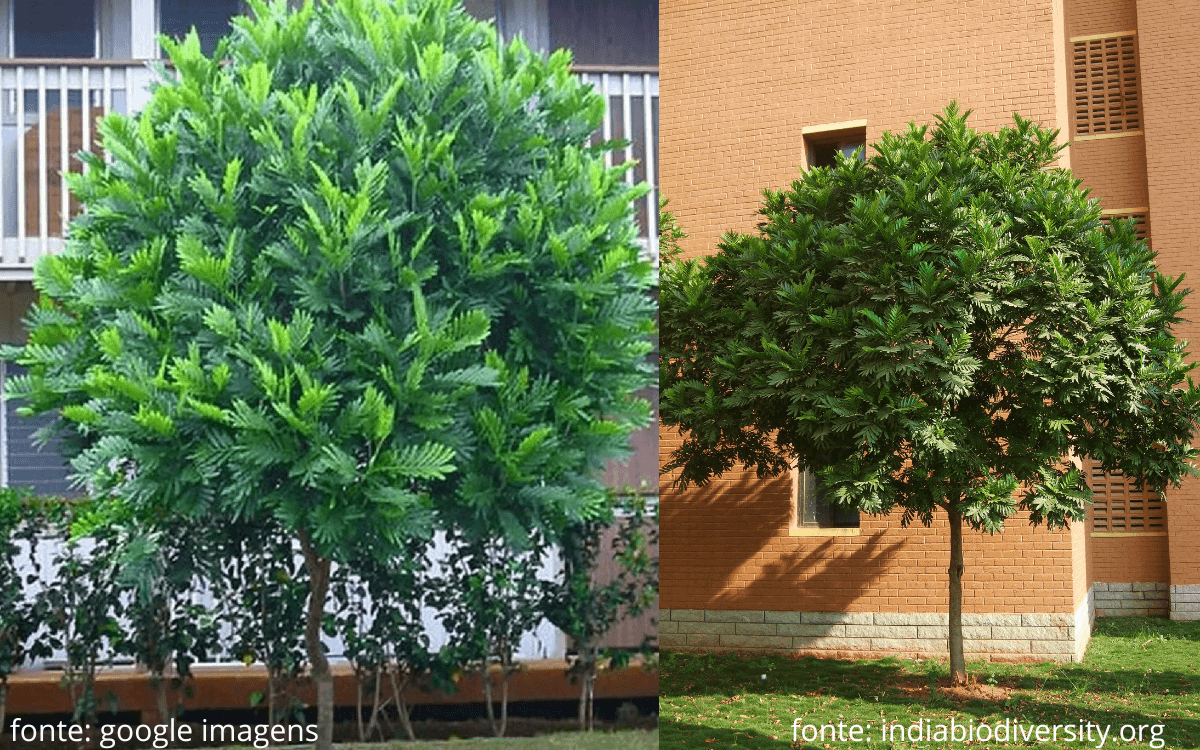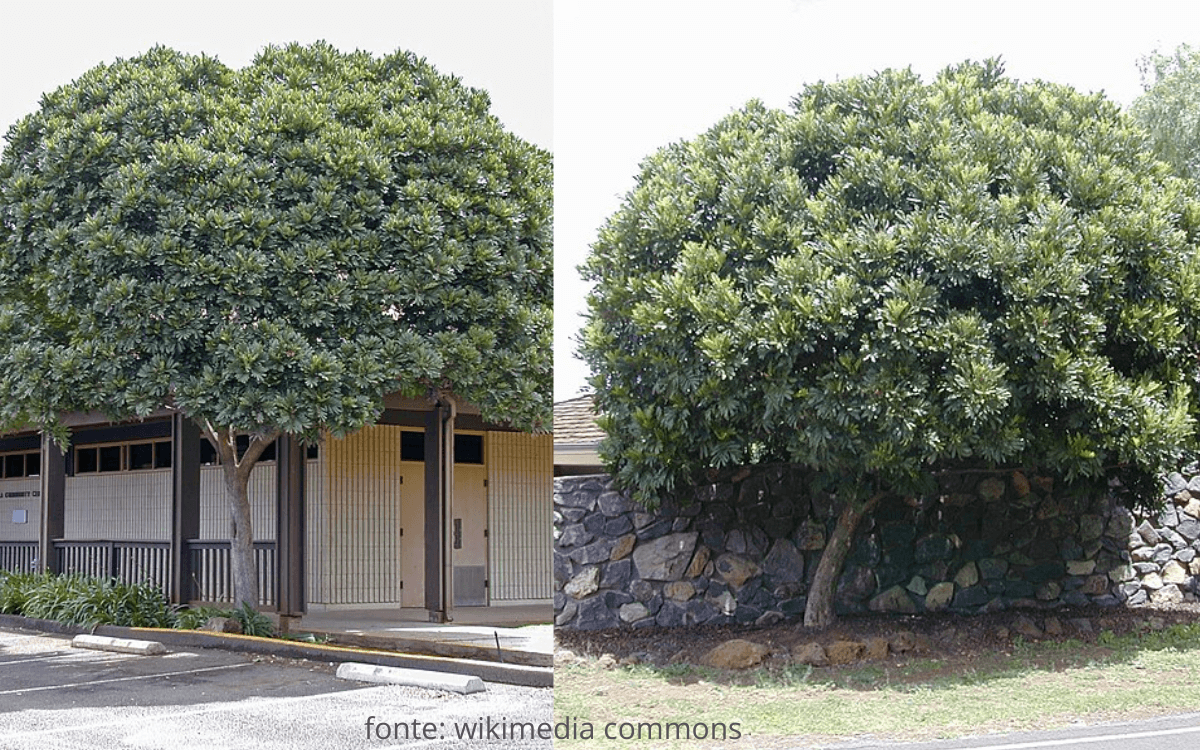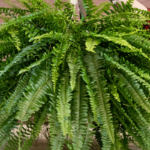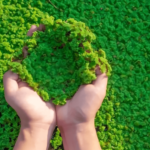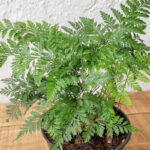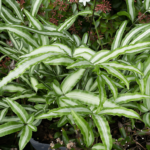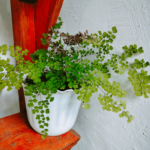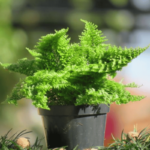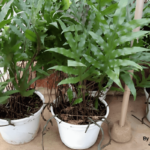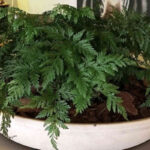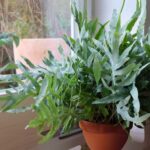The Japanese fern tree (Filicium decipiens), is a fascinating plant native to the tropical jungles of East Africa, India, and Sri Lanka.
Also known as Pihimbiya, this plant can be added to gardens and urban forestry projects thanks to its dense foliage.
In this article, you will learn more about the characteristics, curiosities, and how to properly care for the japanese fern tree.
Plant Characteristics
The japanese fern tree has a woody trunk that varies in diameter with age, supporting a dense and round canopy. The leaves are the signature of the tree, composed of small green leaflets delicately arranged, radiating life and elegance.
When young, the tree has a pyramidal shape, evolving into a more rounded silhouette with maturity. Capable of exceeding 7 meters in height, it stands out in any landscape.
Its pinnate leaves, dark green and shiny, are long and resemble ferns, with wavy edges and a vibrant look.
During the summer and autumn, the tree produces small fragrant flowers in hanging clusters. The fruits, small and woody, mature from green to a purple hue.
In addition to its ornamental use, the Japanese fern tree can be used in sidewalks or as a complement to other flowering species.
Although it can be considered invasive in some contexts, this species is manageable and propagates easily by seeds, making it an accessible choice.
How to Care for the Japanese Fern Tree
Although it is a resilient species, if you want to have a japanese fern tree in your garden, you need to provide some specific care for it to grow quickly and healthily.
Below I will explain in detail what these cares are:
Ideal Climate for the Japanese Fern Tree
The successful cultivation of the japanese fern tree (Filicium decipiens) depends on understanding and respecting its ideal climate, which encompasses aspects such as lighting, humidity, ventilation, and temperature.
Below we will explore each of these elements:
Lighting
The japanese fern tree prefers filtered lighting or partial shade, however, it develops well in places with direct lighting.
Locations near larger trees or structures that provide shade are ideal, allowing the tree to receive enough light without being overwhelmed by strong sunlight.
Humidity
Being native to tropical and subtropical regions, this tree prefers a humid environment.
It is crucial to keep the soil consistently moist, but not waterlogged.
During the warmer months, watering should be more frequent to ensure that the soil remains moist, providing the roots with the ideal environment for nutrient absorption.
Ventilation
Despite preferring a humid climate, the Japanese fern tree needs good ventilation.
Adequate airflow is vital to prevent fungal diseases and other problems related to air stagnation, thus ensuring the health and well-being of the plant.
Temperature
The ideal temperature range for cultivating the japanese fern tree varies between 10°C (50°F) and 28°C (82.4°F).
It is less resistant to low temperatures and frosts, therefore, it should be protected or moved to warmer environments in extreme cold conditions.
How and When to Water
To ensure the health and vigor of this plant, it is crucial to adopt an appropriate watering strategy, balancing the plant’s need for moisture without causing waterlogging.
After planting, it is essential to provide regular watering to support the initial growth of the tree.
At this stage, the plant is establishing its root system and needs consistent moisture to develop well.
The soil should be kept moist, but it is important to avoid water accumulation on the surface.
Well-drained soil is essential to prevent waterlogging. Make sure that water penetrates deeply into the soil, but without saturating it.
During the hotter periods, the plant needs more water to cope with the high temperatures. At these times, increase the frequency of watering, preferably doing it in the early hours of the morning or late afternoon to maximize absorption and minimize evaporation.
Allowing the soil to partially dry out between waterings helps prevent excess water, which can be as harmful as a lack of it.
Especially in young plants, the soil should be allowed to dry out slightly before being watered again.
Remember, balance in watering is key:
Neither too moist, nor too dry.
Observing and adjusting watering according to climate conditions and plant response is fundamental for its success.
Ideal Soil
The japanese fern tree requires soil that facilitates drainage, allowing water to flow easily. This type of soil prevents root waterlogging, which can lead to problems such as rotting and diseases.
The soil should be enriched with organic matter, which can be added in the form of organic compost before planting.
Organic matter helps to provide essential nutrients, improving the structure and fertility of the soil.
Avoid soils with high alkalinity. This tree can grow in both acidic and neutral soils. It is important to test the soil pH before planting to ensure it is within the appropriate range for the species.
Although the Japanese fern tree has specific preferences, it is not overly demanding and can adapt to a variety of soil types, as long as drainage and nutrition conditions are met.
Read also:
- Leatherleaf fern – Care, Characteristics and Curiosities
- Monarch Fern – How to Care and Propagate
- Marisa Fern: 7-Step Growing and Care Guide
Fertilization
To ensure the plant receives the necessary nutrients, the use of fertilizers rich in potassium and phosphorus is recommended.
These nutrients are fundamental to strengthen the plant and stimulate flowering, contributing to the overall health of the tree.
During the spring to autumn, slow-release fertilizers, especially rich in nitrogen, can be used to support the vigorous growth of the tree.
The frequency of fertilization should be adapted according to the location of the plant. For shrubs and ornamental plants, fertilization should be done every 45 days, while for plants in pots, planters, and ground cover, every 15 days is ideal.
If the fertilizer is liquid or diluted in water, the soil should be watered with this mixture. It is essential to follow the recommended dosage to avoid excesses or deficiencies of nutrients.
How to Prune and Multiply the Japanese Fern Tree
Pruning should be done lightly and carefully to maintain the desired shape of the tree and remove dead or diseased branches. This not only improves the appearance of the tree but also promotes its health.
The best time to prune the japanese fern tree is during the colder months of the year, ideally at the end of July and beginning of August.
This avoids stressing the plant during periods of active growth and excessive heat.
Regular pruning helps in the renewal of branches, control of the size and shape of the tree, and prevents it from becoming excessively dense or invasive.
Multiplication of the japanese fern tree can be done through seeds.
For this, the seeds should be planted in the autumn, which is the suitable time for germination.
Although the japanese fern tree can be easily multiplied, it is important to be mindful of its potentially invasive nature. Limit the number of seedlings planted to prevent it from spreading beyond the desired.
Read also:
- Nephrolepis exaltata (Boston Fern) – How to Grow and Care
- Rabbit’s Foot Fern (Davallia fejeensis): Cultivation Guide
Pests, Diseases, and Other Problems
Despite its robustness and beauty, the japanese fern tree is not free from challenges in the form of pests, diseases, and other problems.
Below we will address how you can identify, prevent, and combat these adversities to maintain the health and vitality of this species.
How to Avoid
In addition to maintaining good cultivation of your plant, there are 3 cares that can help you prevent your plant from getting sick or being attacked by pests:
- Regular Inspection: It is essential to regularly monitor the tree, including foliage, bark, roots, and trunk, to detect early signs of pests or diseases.
- Preventive Treatments: Conducting preventive sprays against pests and diseases is recommended, always following the manufacturer’s instructions for safe and effective use.
- The Importance of Pruning: Regular pruning, especially to remove dead or diseased branches, is an effective measure to prevent the development of diseases.
Identification and Combat
- Common Pests: Among the pests that can affect the japanese fern tree are mites, scale insects, aphids, and slugs.
- Fungal Diseases: Diseases such as fusarium wilt and powdery mildew can be problematic. These fungal diseases usually manifest as spots or white powder on leaves and branches.
- Specific Treatment: The approach to treatment should be based on the type of pest or disease identified. It is advisable to seek guidance from a gardening specialist or a local gardening center.
Conclusion
In conclusion, Filicium decipiens, known as Pihimbiya or japanese fern tree, is a great option for your garden or landscaping project.
Throughout this article, we have explored in detail how to properly care for this species, ensuring its healthy and rapid growth. Below is a quick summary of everything that was taught:
- Climate and Location: The japanese fern tree thrives in subtropical and tropical climates, preferring filtered light or partial shade. The ideal environment should be humid, with good ventilation, avoiding temperatures below 10°C or above 28°C.
- Watering: The soil should be kept moist, but without waterlogging. The frequency of watering should be adjusted according to the temperature and local climatic conditions.
- Soil: Prefers well-drained soils, enriched with organic matter. The japanese fern tree grows well in acidic to neutral soils, so testing the soil pH before planting is advisable.
- Fertilization: Fertilizers rich in potassium and phosphorus are recommended, with more frequent nitrogen fertilization during spring to autumn. It is important to follow the recommended dosages to avoid nutritional imbalances.
- Pruning and Multiplication: Pruning should be done carefully to maintain the shape of the tree and remove diseased or dead parts. The japanese fern tree can be multiplied by seeds, preferably planted in the fall.
- Pests and Diseases: Regularly inspect the plant for early detection of pests or diseases. Preventive treatments and proper pruning are essential to keep the tree healthy.
If you liked this text and want to learn about other plants, below are recommendations that may interest you:
- How to Plant, Grow and Care for Celosia (Step by Step)
- Ixora (West Indian Jasmine): How to Care and Propagate
- Spanish Moss: Care, Characteristics and Curiosities
- Hornwort (Ceratophyllum demersum): How to Care
- Columnea: Varieties, How to Care and Make Seedlings
Did you like this text? Then help us reach more people by sharing it on your social networks. Also, leave a comment below, I would be very happy to chat with you 😀

